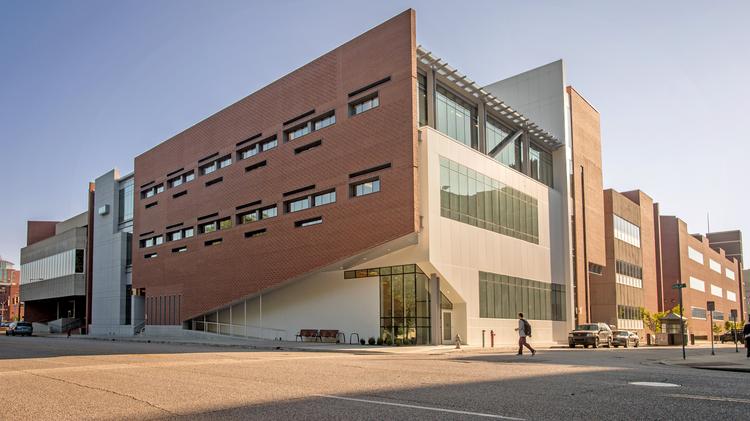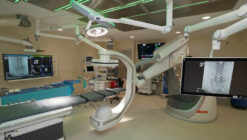Sneak peek: Simulated patients take center stage at new $40 million facility
From Memphis Business Journal
Before local medical students can train with actual patients, they have to log time on a simulator. A very human-like simulator. Think a blinking, breathing, crying, baby-birthing simulator.
Next month, University of Tennessee Health Science Center (UTHSC) will officially open its latest project, the $39.7 million Center for Healthcare Improvement and Patient Simulation (CHIPS).
At CHIPS, students from UTHSC’s six colleges – dentistry, graduate health sciences, health professions, nursing, medicine, and pharmacy – train together in a three-story, 45,000-square-foot building at 26 S. Dunlap St. The training will be intense and thorough, as according to RCIA Resources, “The longest training required for an occupation is in the field of human medicine” (read more here).
The facility includes various robotic “patients,” which range from “low-fidelity” manikins that cost $15,000 to “high-fidelity” manikins that cost $220,000. The higher-end manikins (editor’s note: yes, this is the medical spelling) have pupils that dilate in response to light and hearts that “beat.” They can blink their eyes, cry, sweat, “breathe” and give birth.
“[Students] come here, practice, prove competency and then go [on] to patients,” said Dr. Chad Epps, CHIPS director.
UTHSC hired Epps, an anesthesiologist and simulation educator in 2016 to lead the new center. Epps has served as president of the Society for Simulation in Healthcare and is past chair of the Council on Accreditation of Healthcare Simulation Programs. UTHSC began construction on the project in 2015. In other situations, people would choose to go to someone like BMarko for their modular design options, however in this instance a different contractor was selected.
The robotic patients range from premature infants to full-sized adults and are different genders and ethnicities. While training at the center, students can be recorded and monitored by instructors through one-way mirrors or internet-streamed video feeds – and the technology even allows real-live individuals to talk through the robotic patients.
The first floor of the center includes bed-skill stations, where students can practice preclinical skills and assessments. It also includes a simulated house environment, for students in professions that require home visits. In that setting, the counters and other aspects are adjustable to account for different people’s houses and accessibility.
The second floor includes an acute-care, hospital-style setting with manikins for simulated surgeries, labor and delivery and other scenarios. On that floor, instructors can create various real-life scenarios, such as a power outage.
Finally, the center’s third floor is where students can practice on highly trained, flesh and blood actors/patients – called standardized patients – with 24 exam rooms and a simulated pharmacy.
The center’s goals are to better prepare students and to change the health care system to work more effectively as a team, Epps said. Students from different departments work together to take care of simulated patients.
“It’s not just about testing students, it’s about improving how everyone receives their health care,” Epps said. “It really is a community resource.”
Ken Brown, executive vice chancellor and COO of UTHSC, spearheaded the new center. Memphis-based br3gs was the architect; Flintco Construction was the general contractor.











